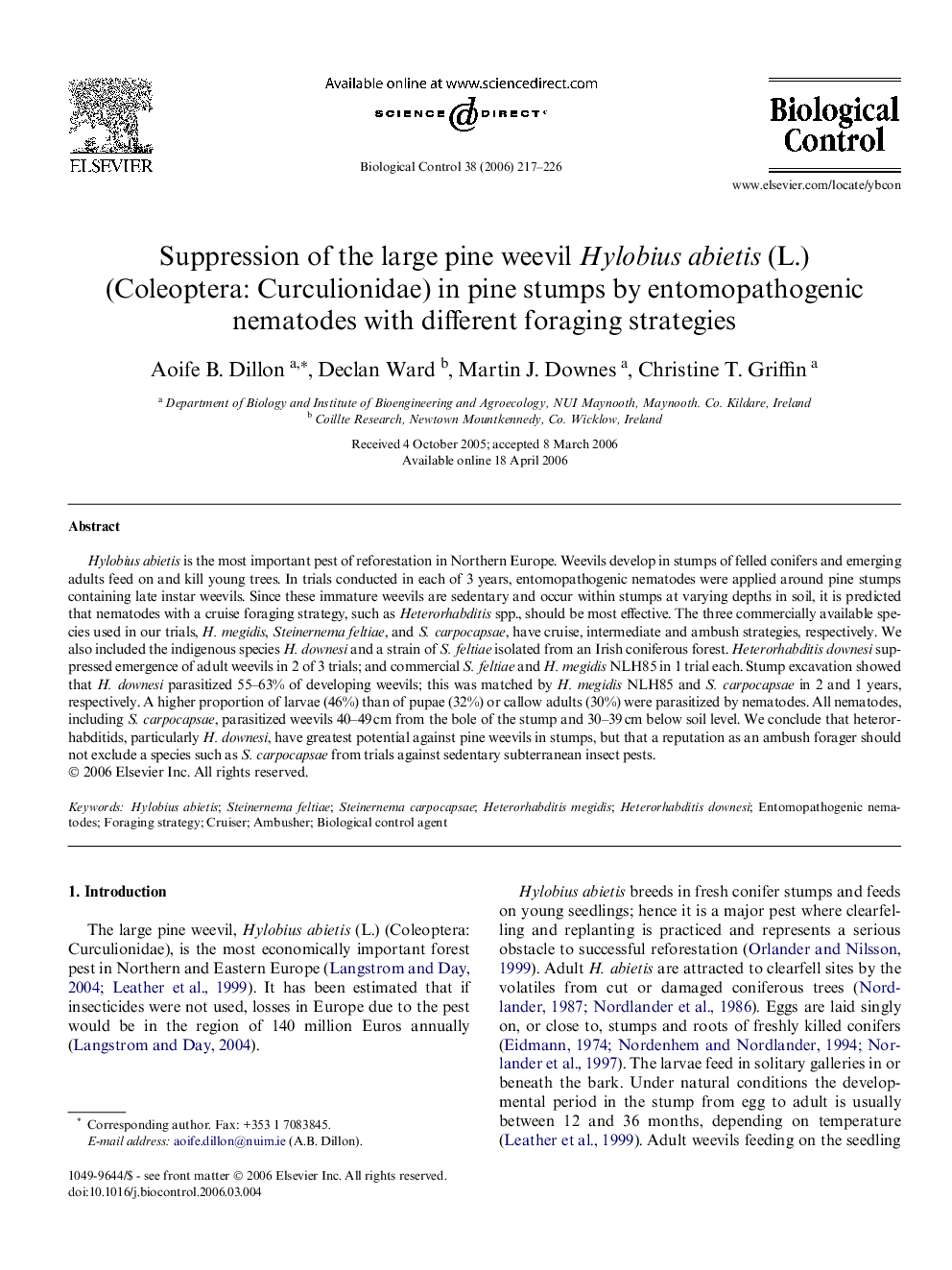| Article ID | Journal | Published Year | Pages | File Type |
|---|---|---|---|---|
| 4505325 | Biological Control | 2006 | 10 Pages |
Hylobius abietis is the most important pest of reforestation in Northern Europe. Weevils develop in stumps of felled conifers and emerging adults feed on and kill young trees. In trials conducted in each of 3 years, entomopathogenic nematodes were applied around pine stumps containing late instar weevils. Since these immature weevils are sedentary and occur within stumps at varying depths in soil, it is predicted that nematodes with a cruise foraging strategy, such as Heterorhabditis spp., should be most effective. The three commercially available species used in our trials, H. megidis, Steinernema feltiae, and S. carpocapsae, have cruise, intermediate and ambush strategies, respectively. We also included the indigenous species H. downesi and a strain of S. feltiae isolated from an Irish coniferous forest. Heterorhabditis downesi suppressed emergence of adult weevils in 2 of 3 trials; and commercial S. feltiae and H. megidis NLH85 in 1 trial each. Stump excavation showed that H. downesi parasitized 55–63% of developing weevils; this was matched by H. megidis NLH85 and S. carpocapsae in 2 and 1 years, respectively. A higher proportion of larvae (46%) than of pupae (32%) or callow adults (30%) were parasitized by nematodes. All nematodes, including S. carpocapsae, parasitized weevils 40–49 cm from the bole of the stump and 30–39 cm below soil level. We conclude that heterorhabditids, particularly H. downesi, have greatest potential against pine weevils in stumps, but that a reputation as an ambush forager should not exclude a species such as S. carpocapsae from trials against sedentary subterranean insect pests.
